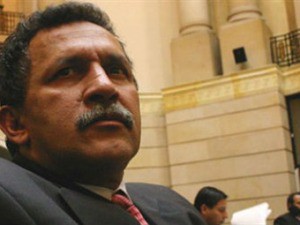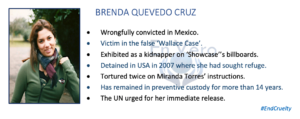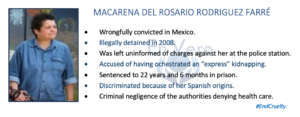
Source: CART EDIT
Author: María Gutiérrez Díaz
March 2, 2016 (original publication in Spanish on Oct. 30, 2015)
Translation: Grégoire Ancellin
Assisted by: Jorge B.
The former Congressman for Caquetá (Colombia), Luis Fernando Almario Rojas was prosecuted for the murder of the Turbay Cote family, probably committed by the FARC guerrillas on December 29, 2000, because of the alleged ties the family had with the paramilitaries and the FARC.
In March 2015, the CART spoke out in favour of the immediate release of Almario Rojas and asked that protective measures be implemented. More than eight months later, the decision of the Supreme Court’s Criminal Chamber is still lagging.
On July 13, 2015, Luis Fernando made a complaint to the Attorney General’s Office against Generoso Hutchison Lugo, UDH (National Unit of Human Rights) and DIH (International Humanitarian Law) Prosecutor 28 in relation to possible disciplinary and criminal offences for his actions in the UDH and DIH file 112. Prosecutor 28 is who leads the investigations regarding the attack on Luis Fernando in 2001 in the city of Florencia, where his house was bombed by the FARC. Despite intelligence reports collected by various authorities at the time, the current prosecutor follows a hypothesis that ignores any official version and maintains that the attack was carried on an empty house, where allegedly Luis Fernando was not in and where he might even have planned the action.
Additionally, Luis Fernando filed a complaint on August 18, 2015 against José Germán Senna Pico for perjury, file that is now presumed closed due to the lack of response from the prosecution. This complaint shows how Prosecutor Reyes Cala used false arguments, such as announcing the defendant’s alleged conviction, establishing that the prosecution could not be a third instance in light of the existing conviction, which is false, since Luis Fernando has never been convicted of any crime.
Furthermore, in his complaint Luis Fernando indicates the inconsistencies and contradictions that Prosecutor Reyes makes by stating that “what is observed is that the complainant thought it was a game by hiding and not showing up at the trial, where he only did so when he was sentenced,“ this being an inconsistency because the defendant has never been convicted and therefore has never had to go to court and, on this account, has not had to hide. Thus the complaint aims to expose the prosecution for having perverted the course of justice and tampered with a public document.
Not satisfied with this complaint, Luis Fernando Almario filed a petition with Colombia’s Attorney General Eduardo Montealegre, on August 24, 2015, seeking up-to-date information on the status of the investigation into Fernando Bahamón Céspedes, who was recognized as false witness by the Supreme Court but whom the public prosecution still considers as a valid witness against Almario Rojas.
The negligence of the Colombian authorities by not proceeding in this possible case of perjury by Fernando Bahamón Céspedes has resulted in Almario Rojas’ loss of freedom, even when there is more than enough evidence indicating Céspedes’ false testimony. The Supreme Court discredited the testimony he gave on August 26, 2009, where he said under oath that in his capacity as Chief of Security of the FARC’s Teófilo Forero Front in the municipality of San Vicente del Caguán he had witnessed meetings that Luis Fernando Almario had with members of the FARC in 2000 where they organized the death of members of the Turbay family.
Therefore we’d like to know: how can the public prosecution continue using false witnesses recognized as such by the Supreme Court, doing irreparable damage to the honour and the lives of innocent people such as Luis Fernando Almario Rojas? The answer is up to the prosecution.




